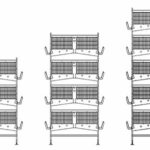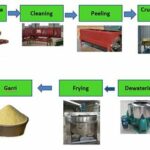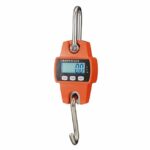Are you thinking that farming comes with mind-blowing, body-aching and breath-taking jobs that no one with other alternatives might want to do? Do you dread jobs like arranging and rearranging thousands of pots with bare hands?
A 31 employee organization in Billerica, Massachusetts known as Harvest Automation now build robots which handle this “very tedious” and “expensive” task. They build robots that arrange pots in nurseries and greenhouses. The company, Harvest Automation, is made up of about $25 million in financing and 29 customers. Most of the customers began with four of the $30, 000 bots.
If you are an engineer, you might want to read the account on how the company began:
Taking a Flight on iRobot Nest
Going through the tour of life as usual, Joseph Jones, the associate founder and CTO met with some other three founders at iRobot. They were all together on the team that did a more open work on the robotic vacuum cleaner known as Roomba. The success of Roombawas quite delightful but stressful.
As at 2006, iRobot had become popular to the point that it was difficult to do projects outside the consumer product because there were lesser opportunities to explore. This led Joseph Jones and Charlie Grinnell, the COO on a discussion about robots that would be both innovatory and mercantile. Charlie opined that since whatever they created would be in the iRobot class, they should make the moves as an entity. They organized themselves in his house and spent the next few months contemplating on what to create.
Their Three Codes of Robotics
At first, they had no product but made some rules.
The first rule was that several robots were created to function with numerous properties in numerous circumstances. Such robots which are generality-attached can function in various dimensions without achieving excellence in any. So they planned to invent a robot which can do only one job excellently.
Secondly, most works are usually done on systems with numerous hand-offs. In a suitable situation, the distribution of systems should be based on the tasks performed by robots and preferable for people. This implies that the robot should be secure enough to work together with humans.
Thirdly, the robot should have skills for mobility with ability to operate in the human habitat rather than in a technologically designed environment.
The Space for Growth
In order to have new ideas, Joseph and Charlie attended trade shows. In a trade show for horticultural growers, someone told them about an issue which is generally experienced in industry. This is the issue of pots spacing.
Annually, about two million ornamental plants are sold. These plants began growing as seedlings in pots that are generally collected intimately together for space maximization. During growth, more spaces are needed and the pots must be set apart, sometimes on a continual basis as the plants get bigger. There is therefore a need for workers to bend their necks and move the pots, ensuring the spaces between them are consistent. This is done in all weather conditions, with the risk of repeated stress injuries attached to it.
The ideal jobs for robots are filthy, boring and harmful. This is specifically qualified for all the three areas.
The Test
Joseph and Charlie discussed with possible customers before the development of the robot. They were very willing to have something like that, because they experience difficulties getting people to do the job.
A partnership program was created to help them have a better insight of how the robot suits the workflow. Therefore, participation was based on the payment of $20, 000 by growers which will be close to the purchase price of a robot. About a dozen companies signed up, and the robot was tested on site in about half of the companies.
Various adjustments were made as a result of those tests. They made continual modifications on the software and hardware to the point that their robots could arrange bumps, ruts and gravel.
Robot Farmers
They believed the robots could be useful on farms too. Therefore, they began a trial program in California to examine the capability for cultivating particular food crops such as strawberries and tomatoes – in pot as well as using robots for spacing them. This would add more speed and ease to the work of farmers and make them grow food products in an environment free from artificial agrochemicals with effective regulation.
There would be no limitation by the soil on the ground because the pots will be the source of growth with all the required means for growing crops. The robots would only function as undertakers by carrying the pots to the workers who will do the picking but have no ability to harvest the food. This would prevent workers from sustaining injuries as it is the usual case and give farmers the opportunity to plant more crops, because robots do not require space to walk between plants.
According to their computation, it is possible for farmers to fix 30 percent more strawberries on an acre of land.
Their robots have the capability to assist with pests as well. Rather than filling everywhere with chemicals, the robots can assist farmers through the discovery of infested areas. They requested for a robot which could carefully inspect and discover issues in individual plants, giving farmers the chance to reduce the scope of their responses. Eventually, the presence of chemicals will be reduced in the food supply.
An Intention to Improve, Not to Abscond with Jobs
They have a concern that the robot will be misconstrued to be absconding with jobs. Charlie talked to customers about such. They told him not to bother that no one will be sacked. At present, growers have insufficient workers, with the plan to keep them and give them tasks of greater value. The workers on their training clarified that they would prefer supervising robots to moving pots around with hands.
A More Preferable and Less Expensive Bot
One of the difficulties they encounter is making the robots more dependable. These robots ride on possibly grave terrains usually above ten miles daily. There is much occurrence of leaping and staggering. The only way out of this issue is to keep conducting test on them and gathering information from customer sites. If there is any failure, they will make analysis to deduct the reason, and make adjustments of the robot to avert such occurrences when required.
There was also a need to cut down the price. When you make something at first, you are liable to overdesign. Afterwards, you can check it out to know the relevant and irrelevant parts, and redesign it at a cheaper rate.
Concerning competition, there are surely other options in the handling of materials, which is their next goal. However, they have a boundary, because they create things to function outdoors, where you don’t direct the affairs of the environment. Also, to add the robot of another company to a warehouse, you are required to remove all the items in the warehouse to install the system created by the supplier. These robots are self-governing enough to handle what is already inside.













